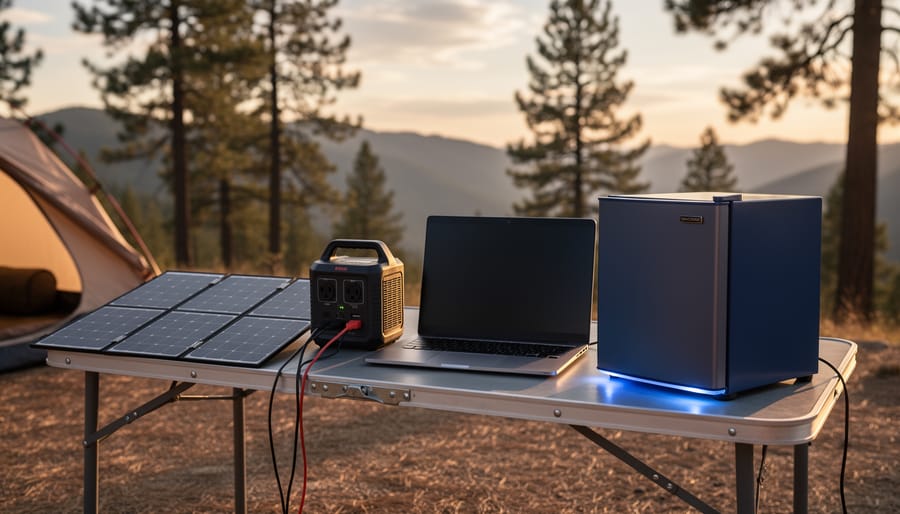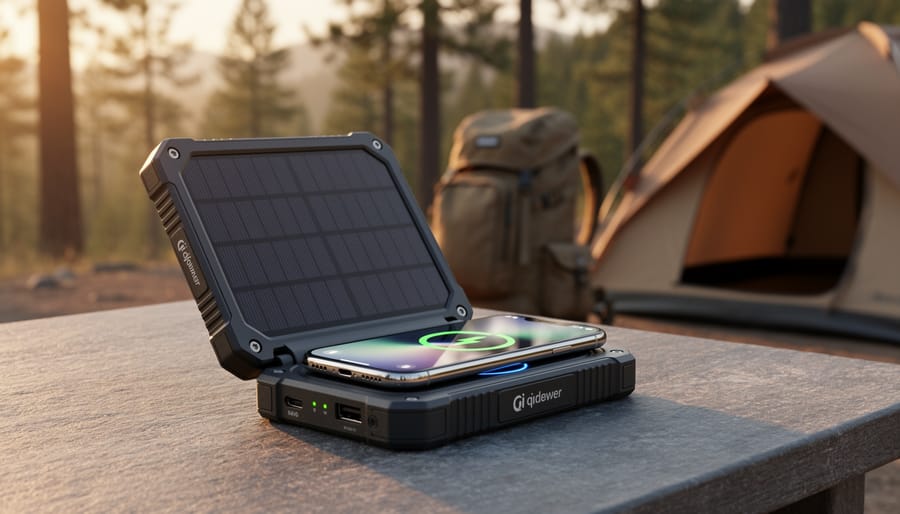How Far Apart Should Solar Lights Be Placed
Updated:

The ideal spacing between solar lights to be placed is typically 5 to 10 feet apart. This range allows for optimal illumination while factors like desired brightness, fixture size, and area dimensions are considered.
This article will provide comprehensive guidelines for determining the best distance between your solar fixtures for any landscape lighting ideas. We will discuss recommended solar light spacing, discuss lighting techniques, and cover aesthetic aspects of solar light placement.
Let’s start by talking about the factors that affect solar light spacing.
Key Factors Determining Solar Light Spacing
When determining how far apart to place your solar panel and lights for outdoor lighting, there are several key factors to consider:
What Is the Purpose of the Lighting?

Consider the purpose of the lighting and the desired effect. Do you want to create an accent or ambiance or enhance security?
- Accent lighting can feature wider spacing to highlight specific landscape elements or architectural features.
- Ambiance lighting for a relaxed atmosphere can utilize soft, farther-apart lighting. Too many lights can negatively impact the ambiance.
- Security lighting needs closer spacing for optimal illumination of paths and entryways.
How Bright Should the Area Be?
The desired brightness level will directly impact light spacing.
- If you want the area to be brighter, position the solar fixtures closer together, as the beams overlap and combine to generate higher light intensity.
- The lights can be stationed farther apart for a more understated, dimmer effect.
Consider both the atmosphere you want to achieve and the visibility needs of the area.
What Size and Lumens Are the Light Fixtures?
The physical dimensions and lumen output listed for each solar light model factor into optimal intervals.
- Larger lights and higher lumens allow wider spacing between fixtures.
- Smaller, lower-lumen lights need closer placement to illuminate the area sufficiently.
How Large is the Area Being Lit?
The width of a walking path or the total square footage of an outdoor space or garden area will influence the required spacing.
- Narrow paths need lights closer together for adequate coverage across the width.
- Larger open yards and wider paths need solar lights spaced farther apart.
Will the Area Get Sunlight for Solar Charging?
When siting your solar lights in outdoor spaces, assess potential direct sunlight barriers like trees, buildings, or other structures that could cast shadows on the panels and hinder solar recharging.
Avoid placing them in perpetually shaded spots to maximize solar absorption throughout the day.
Recommended Distances to Place Solar Lights
When installing solar landscape lighting, the spacing between fixtures will depend on the size of the illuminated area and the brightness of the selected lights.
While keeping general recommendations in mind, you may need some adjustments to optimize lighting for your space. This will ultimately decide how many lights you need to buy and install.
- A tight distribution of 5-6 feet between solar path lights is recommended for narrow paths. This provides enough light to see the path clearly while walking at night.
- Broader pathways, driveways, sidewalks, and parking areas allow for wider spacing between 6-8 feet for the solar spotlights. The expanded width means the outdoor lights can be positioned farther apart while providing adequate illumination across the entire surface.
- For very wide paths, consider alternating solar landscape lights on opposite sides rather than precisely lining up fixtures. The staggered placement maintains consistent lighting.
- Solar-powered lights can be 8-10 feet apart in large yards and landscapes. The bigger area requires greater distances between lights to light up the space sufficiently.
The brightness of the solar lights also impacts the ideal spacing:
- Lights with lower lumens (less bright) must be closer together, like every 5 feet.
- Lights with higher lumens (brighter) can be placed farther apart, like every 8-10 feet.
Creative Lighting Techniques to Use with Solar Lighting

Solar lighting allows you to experiment with different placements and techniques to achieve unique effects.
- Uplighting uses ground-mounted solar lights aimed upward to dramatically light trees, sculptures, walls, and other vertical elements. Uplighting creates an opposite effect from the sun/moon by generating light and shadows from below.
- Downlighting involves mounting solar fixtures high overhead to illuminate an area from above broadly. Lower mounting heights can create accent lighting.
- Silhouetting positions lights behind objects to make them appear as dark shapes against a lighter reflective background.
- Grazing positions solar lights close to textured surfaces like stone or tree bark. The side lighting strongly accentuates tactile details and dimensions.
Trying out uplighting, downlighting, silhouetting, and grazing with creatively placed solar panels and outdoor solar lights can add intrigue to your landscape. Experiment with solar light placement to find the perfect positions and angles.
Aesthetic Considerations for Installing Solar Lights
The spacing and placement of solar lighting should enhance, not detract from, the natural beauty of your outdoor environment. Considering some aesthetic guidelines will help your landscape lighting look cohesive and purposeful.
- Avoid cramming an excessive number of solar lights close together. Overcrowding creates a cluttered, chaotic look. Allow enough space between lights.
- Strive to space solar panels evenly for a clean, balanced distribution. Consistency looks more intentional than random scattered placements.
- Rather than uniform lighting, selectively highlight signature features or areas like trees, art, or water fixtures. Strategically focus attention on key landscape elements.
Additional Tips for Installing Solar Path Lights
Here are some extra pointers to help you optimize your solar lighting placement:
- Allow some overlap between light beams for more even coverage. Avoid large dark gaps between fixtures.
- Place solar lights on both sides rather than just one for wide paths and driveways. This better illuminates the full width.
- Get creative with solar placement in gardens and landscaped areas. Experiment with positioning for unique effects.
- Angle fixtures carefully to highlight or accent key features like steps, corners, or yard art.
- Mix and match solar light styles and sizes to add visual interest. Use uplights, path lights, spotlights, etc.
It’s important to know that solar lights are supposed to switch on at dusk and off again at dawn. If your solar lights are not operating as intended, knowing the reasons behind this problem can help address it.










